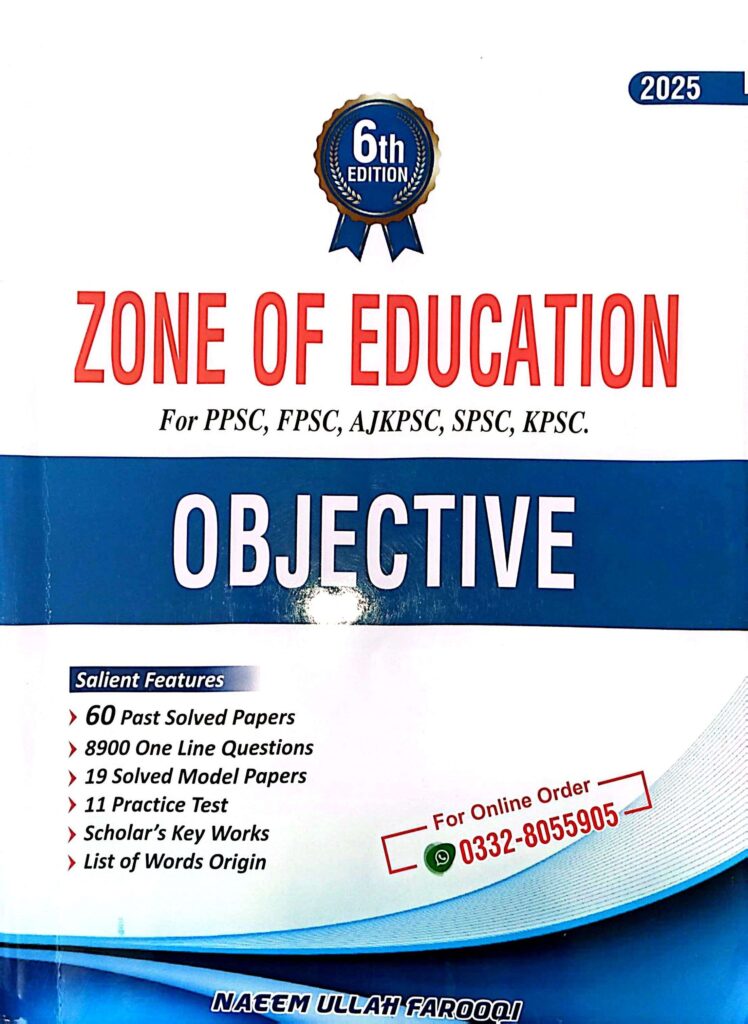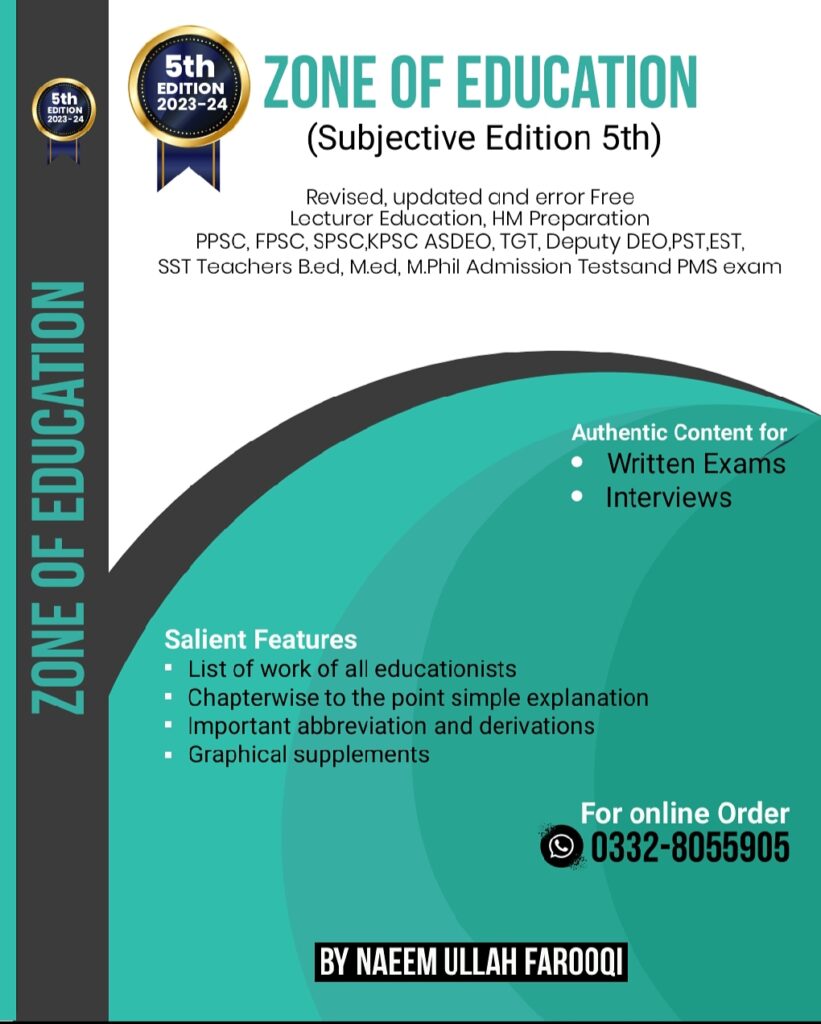Nature of Teaching
.134. The pre active phase of teaching includes all those activities which a teacher performs before classroom teaching or before entering the classroom.
A. After
B. Before
C. during
D. None of the above
135. Are the following activities included in phase of teaching? Fixation. Decision about the subject matter. Arranging/sequencing the elements of content for presentation. Determining the strategies of teaching. Implementation of teaching strategies.
A. Pre active
B. Interactive
C. Post Active
D. All of the above
136. The phase of teaching comprises all those activities which a teacher starts right from entering the classroom till the presentation of the contents.
A. Pre active
B. Interactive
C. Post Active
D. All of the above
137. Are the following activities included in the interactive phase of teaching? Sizing up of the class. Diagnosis of the learners. Action and reaction or achievement.
A. No
B. May be
C. Yes
D. May not
138. Are the following activities considered the post active phase of teaching? Defining the exact dimension of the changes caused by teaching. Selecting appropriate testing devices and techniques. Changing the strategies in terms of evidence gathered.
A. No
B. May be
C. Yes
D. May not be
139. Is the Teaching strategy the means to achieve learning objectives?
A. No
B. May be
C. Yes
D. May not be
140. “Teaching strategy is a generalized plan for a lesson which includes structure desired learner behaviour in terms of goals of instruction and an outline of planned tactics necessary to implement the strategy The lesson strategy is a part of a larger development scheme of the curriculum”.Who rendered this definition?
A. E.Stone
B. Broudy and S.Morris
C. E.Stone and Morris
D. None of the above
141. has stated “Method refers to the formal structure of the sequence of acts commonly denoted instruction The term “Method”covers both strategies and tactics of teaching and involves the choice of what is to be taught and in which order is it to be presented”
A. Broudy
B. Clarke
C. Burton
D. None of the above
Answer-Key
134. B 135. A 136. B 137. C 138. C 139. C 140. C 141. A
142. All teaching methods can be classified under the three heads i.e. Telling Method Showing method and Doing Method.
A. No
B. May be
C. Yes
D. May not be
143. Telling method of teaching includes.
A. Lecture
B. Questioning
C. Discussion
D. All of the above
144. Showing method of teaching includes.
A. Lecture
B. Demonstration
C. Excursion
D. Both B and C
145. Doing method of teaching does not include.
A. Lecture
B. Questioning
C. Discussion
D. All of the above
146. The origin of the word”strategy”is
A. British
B. Latin
C. Greek
D. French
147. The word Strategy has its root in Greek word “Strategos”Stratos means army and agein mean to lead.
A. No
B. May be
C. Yes
D. May not be
148. Planning in education is a carefully devised plan to achieve a goal or the art of developing or carrying out such a plan.
A. Disagreed
B. May be
C. Agreed
D. May not be
149. The root of word Method is Latin word. Methodos originally coming from Greek, which means “Pursuit”from meta “after” and hodos means “journey”.
A. Finnish
B. Latin
C. Persian
D. Spanish
150. The meaning of the term Method include.
A. Way of doing or carrying something out, especially according to a plan
B. Orderliness orderly thought,action or technique choice the body of systematic techniques used by a particular discipline
C. All of the above
151. The word Tactic coming modern Latin is rooted in word “Taktikos”which means “of arrangements from taktos”arranged”from tessein to”to arrange.
A. Finnish
B. Greek
C. Persian
D. Spanish
Answer-Key
142. C 143. D 144. D 145. D 146. C 147. C 148. C 149. B 150. C 151. B
152. The term tactic.
A. Literally means a method or a course of action followed in order to achieve an immediate or shot-term aim
B. Arrangement of the course of actions for realization of immediate or short term aim
C. Arrangement of the course of actions for realization of a long term aim
D. Both A and B
153. Techniques.
A. belong to methods
B. are psychological in nature and techniques
C. are used for the implementation of methods
D. All of the above
154. Which of the following the types of techniques?
A. Questioning Discussion
B. Exposition
C. lllustration,Story telling Narration, Supervised study
D. All of the above
155. What are the two major teaching strategies?
A. Direct Strategy
B. Indirect Strategy
C. Both A and B
D. None of the above
156. The direct teaching strategy is.
A. highly teacher-centered
B. among the least used
C. among the most commonly used
D. Both A and B
157. Indirect teaching strategy seeks a high level of student involvement in.
A. observing
B. investigating drawing inferences from data
C. forming hypothesis
D. All of the above
158. is an educational approach which is characterized by teacher centeredness, it is also known as art, science profession or study of teaching.
A. Andragocical
B. Pedagogical
C. Both A and B
D. Neither A nor B
159. contains learning strategies focused on teaching adults.It is often known as the process of engaging adult learners in the structure of the learning experiences.
A. Andragocical
B. Pedagogical
C. Both A and B
D. None of the above
160. Contributors to the theories of pedagogy include.
A. Maria Montessori John Dewey
B. Johann Heinrich Pestalozi Jean Piaget
C. Friedrich Froeble ,Lev Vyogtsky,Benjamin Bloom
D. All of the above
Answer-Key
152. D 153. D 154. D 155. C 156. A 157. D 158. B 159. A 160. D
JOIN ZONE OF EDUCATIONPK!
Discover the most comprehensive and reliable pedagogy resources in Pakistan, curated for competitive exam success. Our content covers all competitive exam MCQs, including PPSC, FPSC, AJKPSC, SPSC, and more. Designed to empower learners with top-notch material and insights, trust us for your preparation journey!


